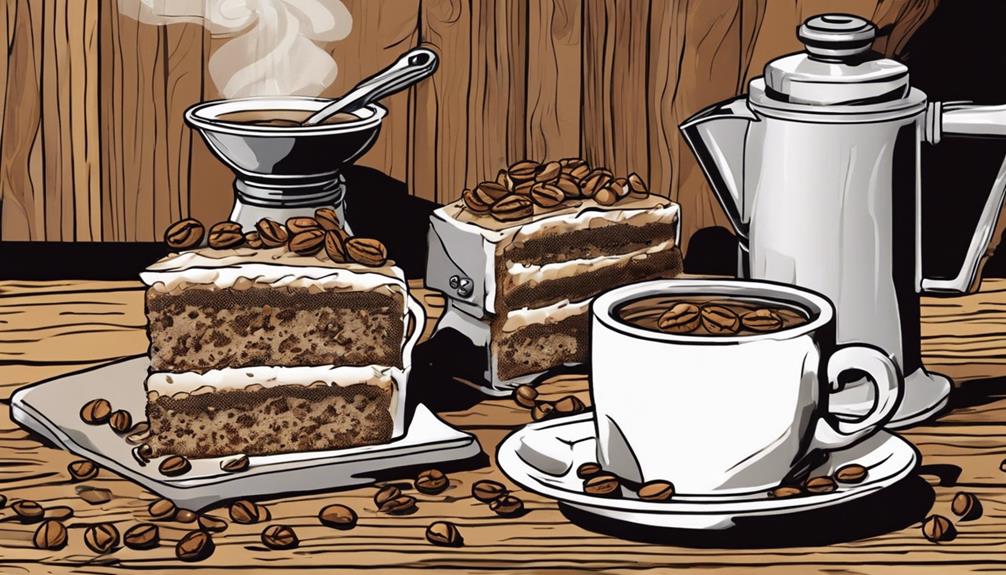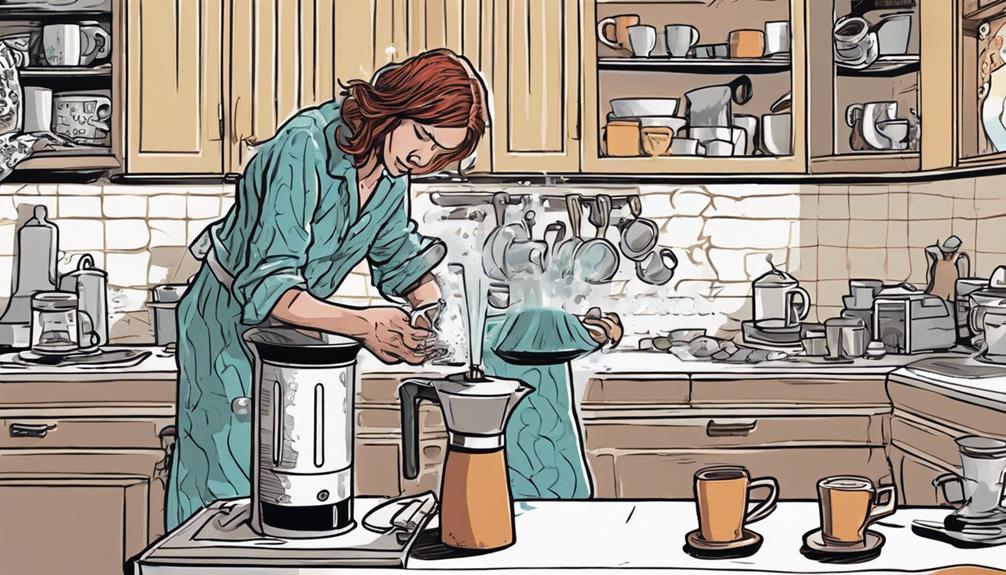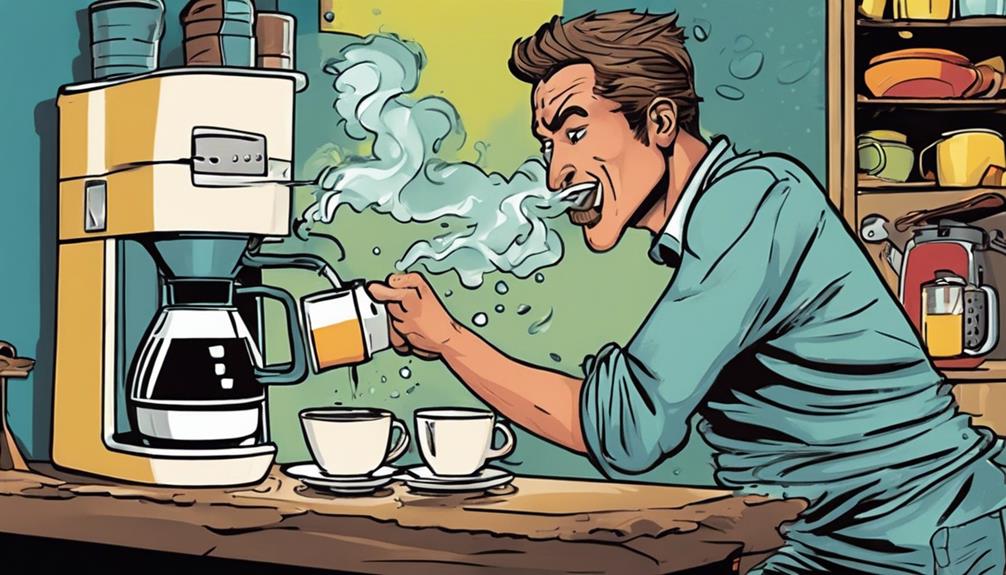In order to create a successful coffee shop business plan, begin by crafting a compelling summary and creating accurate financial projections. Research your target market, outline growth strategies, and define your ideal customer base. Utilize a useful template, analyze market data, and develop an effective marketing strategy. Promote your coffee shop on social media, organize engaging events, and collaborate with local influencers. Efficiently manage your inventory, consider your responsibilities, and perfect your production process. Analyze financial data, monitor cash flow, and determine your break-even point. Refine all of these elements to achieve success with your coffee shop venture!
Key Takeaways
- Utilize a structured business plan template to guide your coffee shop's development.
- Conduct thorough market research to understand your target audience and competition.
- Develop a detailed marketing plan to promote your coffee shop effectively.
- Consider startup costs in financial projections to ensure realistic planning.
- Start with a clear market analysis to identify opportunities and challenges.
Essential Components
Incorporate the necessary components in your coffee shop business plan to secure a detailed roadmap for success. The coffee shop business plan should include a comprehensive market analysis, identifying the target demographic, competition, and potential growth opportunities. It should also outline a detailed marketing strategy, including plans for social media, local advertising, and community engagement.
Additionally, the business plan should include a financial forecast, outlining start-up costs, projected revenue, and profit margins. It should also detail the necessary equipment, staffing requirements, and suppliers. If the coffee shop plans to expand, the business plan should also include potential strategies for growth, such as opening a street cafe coffee cart to reach new customers.
Start with a compelling executive summary that encapsulates the essence of your business.
Lay out your financial projections, including revenue forecasts, expenses, and profit margins.
Conduct a thorough market analysis to understand your competition, target demographic, and industry trends.
Outline growth strategies that focus on expansion, diversification, and sustainability.
Define your target market clearly and align your menu offerings to cater to their preferences and needs.
Provide operational details such as location, equipment, suppliers, and staffing requirements for seamless day-to-day management.
Develop cash flow projections that account for both expected and unexpected expenses to secure financial stability.
Implement customer service plans that prioritize satisfaction, retention, and loyalty.
Writing Strategies

Utilize a structured business plan template to effectively outline key aspects of your coffee shop business strategy.
When writing your coffee shop business plan, start with a clear market analysis to understand your target audience, competition, and industry trends. Conduct thorough market research to support your decisions on menu items, pricing, and positioning.
Develop a detailed marketing plan that includes strategies to reach your target market, differentiate your coffee shop, and promote customer loyalty.
In your financial projections, consider startup costs, operating expenses, and revenue forecasts to guarantee a realistic outlook for your business.
Detail your business operations, outlining day-to-day processes, staffing requirements, and supplier relationships.
Address key factors for success, such as operational efficiency and quality control, to maximize sustainability and profitability.
Marketing Tactics

Enhancing brand visibility and customer engagement can be achieved by leveraging social media platforms like Instagram and Facebook for your coffee shop marketing tactics. By actively posting about your menu offerings, special events, and behind-the-scenes glimpses, you can connect with your audience on a personal level.
Hosting special events such as open mic nights or art shows can draw in a diverse crowd and create a unique atmosphere that sets your coffee shop apart.
Collaborating with local influencers or businesses can expand your reach and attract new customers who trust the recommendations of those influencers. Implementing customer loyalty programs or offering discounts to regulars can foster a sense of belonging and encourage repeat visits.
Utilizing email marketing campaigns to showcase new menu items, upcoming events, or promotions can drive traffic to your coffee shop and keep your customers informed and engaged. Building partnerships within the community can also help in spreading the word about your coffee shop and establishing a strong presence in the local market.
Operational Management
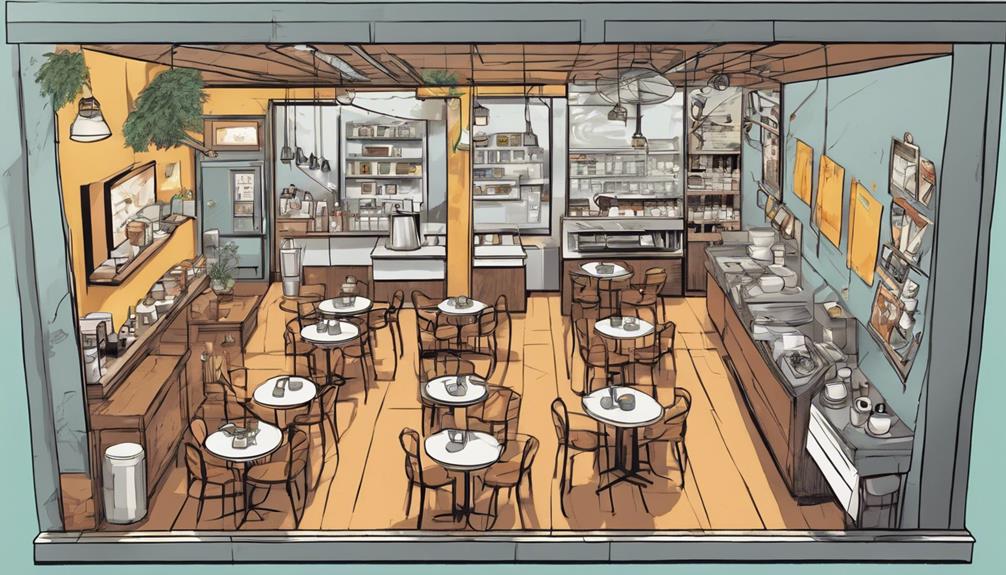
To effectively manage the day-to-day operations of your coffee shop, overseeing customer service, point of sale systems, and inventory tracking is essential.
When it comes to operational management in a coffee shop, consider the following key aspects:
- Planning the supply chain for menu products to guarantee efficient inventory management and timely restocking.
- Deciding on owner/operator roles or hiring skilled management staff to maintain a smooth operation flow.
- Balancing quality, consistency, and speed in production to meet customer expectations in a cafe setting.
- Implementing effective inventory tracking systems to monitor stock levels and prevent shortages or overages.
- Addressing the complexities of management and production to guarantee overall success and sustainability of your coffee shop.
Financial Planning
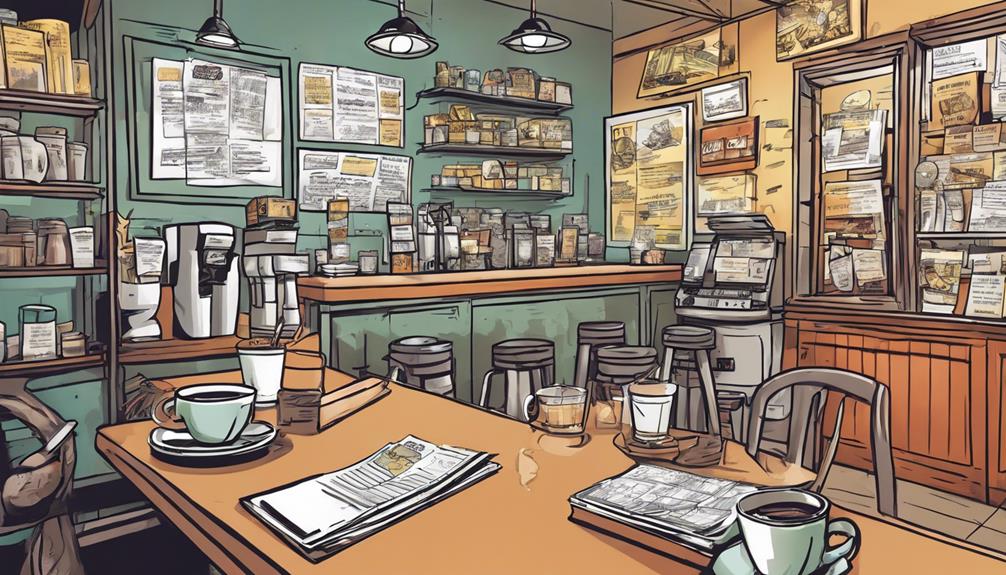
How can you ensure the financial stability and growth of your coffee shop through effective planning and management?
Financial planning is crucial for the success of your coffee shop. Projecting cash flow guarantees that you can cover expenses and maintain stability.
The balance sheet summarizes your cafe's assets, liabilities, and overall net worth, providing a snapshot of your financial health.
Calculating the break-even point helps you understand when your coffee shop will begin to turn a profit.
To secure funding for growth, you need to set clear financial goals and strategies for business expansion.
Profit margins and ownership structure play an important role in determining the financial health of your coffee shop.
Effective financial management is key to sustaining profitability and ensuring long-term success in the competitive coffee shop industry.
Frequently Asked Questions
How to Write a Business Plan Step by Step for a Coffee Shop?
You start by outlining your vision, target market, products/services, and marketing strategy. Include sections like executive summary, market analysis, financial projections, and growth strategies. Research competition, analyze target market, define ownership structure, and develop a detailed marketing plan.
How Do I Plan a Coffee Shop Layout?
Imagine your coffee shop as a symphony. Arrange seating like harmonious notes, flow like a well-timed beat. Blend customer comfort with staff efficiency. Dance between aesthetics and functionality. Let regulations be your conductor.
How Do I Start Planning for a Cafe?
Start planning for your cafe by defining your concept, target market, and unique selling proposition. Research the local market, competition, and ideal location. Determine startup costs, budget, and funding sources. Develop a detailed menu, pricing strategy, and marketing plan.
How Profitable Is Owning a Coffee Shop?
Owning a coffee shop can be profitable, with margins typically ranging from 11-15%. Successful shops earn $200,000 to $500,000 annually. Strategic planning, unique offerings, and loyal customers are key to maximizing profitability and seeing ROI within 2-3 years.
Conclusion
Now that you have all the key components for your coffee shop business plan, you're ready to brew up success!
Remember, just like a perfectly roasted coffee bean, your plan needs time and attention to reach its full potential.
So grab your favorite mug, pour yourself a cup of motivation, and get ready to take on the world of coffee shop entrepreneurship.
The sky's the limit – or should I say, the foam on your latte!


